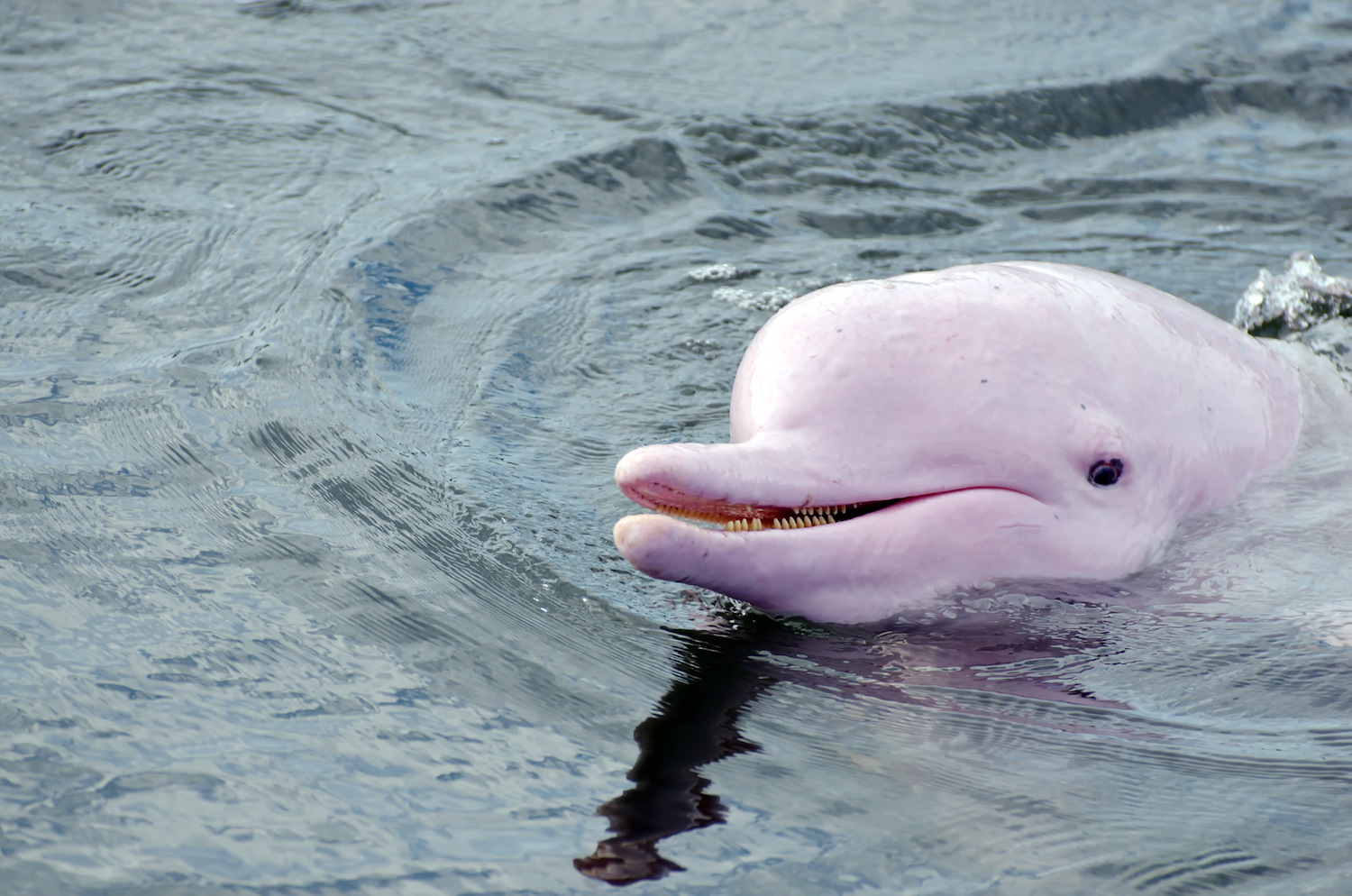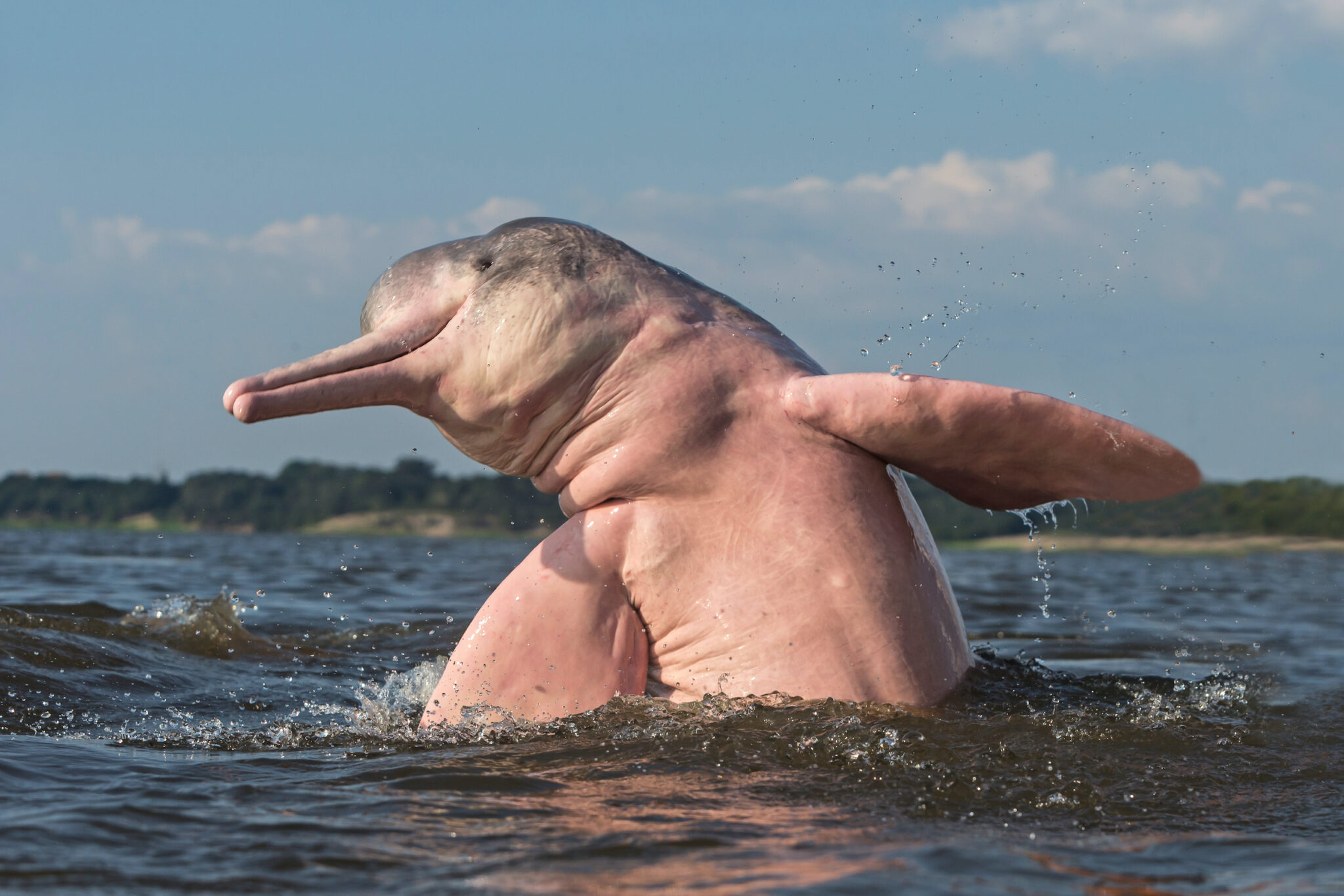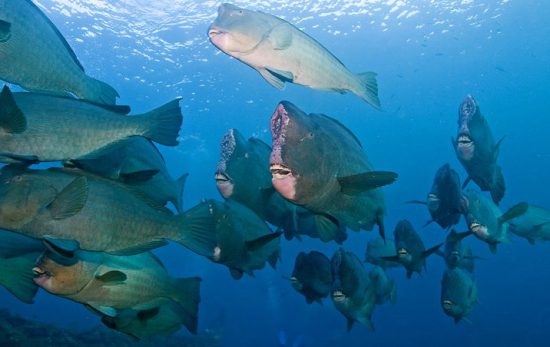Dolphins are some of the most loved marine animals in the world, though most people are only familiar with dolphin species that live in the ocean. As we celebrate Valentine’s Day, we’re shining a spotlight on one of the most unique and rarely seen dolphin species: the Amazon pink river dolphin. Yes, they are actually pink!
If you’re looking to show the underwater world some more love for Valentine’s Day this year, we invite you to join our global community of PADI Torchbearers working together to seek adventure and save the ocean. We care deeply about exploring and protecting the planet, above and below the surface. Join us in celebrating the incredible marine life that call this blue planet home – like the Amazon pink river dolphin.

They come in many shades of pink (and gray).
The Amazon pink river dolphin is obviously famous for its pink color. But, many don’t know that it also comes in a variety of other shades. The dolphins actually start off gray when they are young, and slowly turn pink as they get older. Their final color can be influenced by their behavior, diet, capillary placement, and exposure to sunlight. They can be anywhere from mostly gray with some pink spots, to almost flamingo pink. The best part is, when this species of dolphin gets excited, they can flush bright pink, similar to humans blushing.
They have the largest bodies and brains of any freshwater dolphin.
Out of the five freshwater species of dolphins, the Amazon pink river dolphin comes out on top. Measuring up to 9 feet (2.7 meters), and weighing up to 400 pounds (181 kilograms) – they are certainly massive. Living up to 30 years, they also have unusually large brains, with roughly 40% more brain capacity than humans.
They are more solitary than most other dolphins.
The Amazon pink river dolphin is often seen alone or in small groups of 2 – 4 individuals. In some food-rich areas, or at the mouths of Amazonian rivers, they can sometimes be found in larger groups, but it’s less common. Nevertheless, these dolphins are still incredibly curious and outgoing animals. They have even been known to be fairly interactive with humans in this region.
They are incredibly agile.
Unlike other dolphins, these remarkably pink marine mammals have unfused vertebrae in their necks. This means that they have the ability to turn their heads 180 degrees. That way, they can maneuver around sunken tree trunks, rocks, and other obstacles found in their murky river environments. Pink river dolphins can also swim forward using one flipper while simultaneously paddling backwards with the other – allowing them to turn with incredible precision. They are also frequently seen swimming upside down, which possibly helps them see the bottom of the river better.
There’s tons of mythology surrounding them.
These unique dolphins, often called Botos, are the subject of many South American legends. One story claims that during the night, pink river dolphins morph into handsome men to seduce the women of the village. Another claims that if you go swimming alone, the dolphins may whisk you away to a magical underwater city. Locals frequently considered it to be bad luck to harm them, and even worse luck to eat them. Their status as a semi-magical being may have helped to protect the species by encouraging humans to treat them with respect. You can learn more about Amazon pink river dolphin conservation via non-profits like Whale and Dolphin Conservation and the Amazon River Dolphin Conservation Foundation.

Love learning about unique underwater animals? For more cute critters, check out some of our other ocean animal blogs:
Let PADI Travel help you plan your next dive trip to see the pink river dolphin, found throughout much of the Amazon and Orinoco river basins in Bolivia, Brazil, Colombia, Ecuador, Guyana, Peru, and Venezuela.

